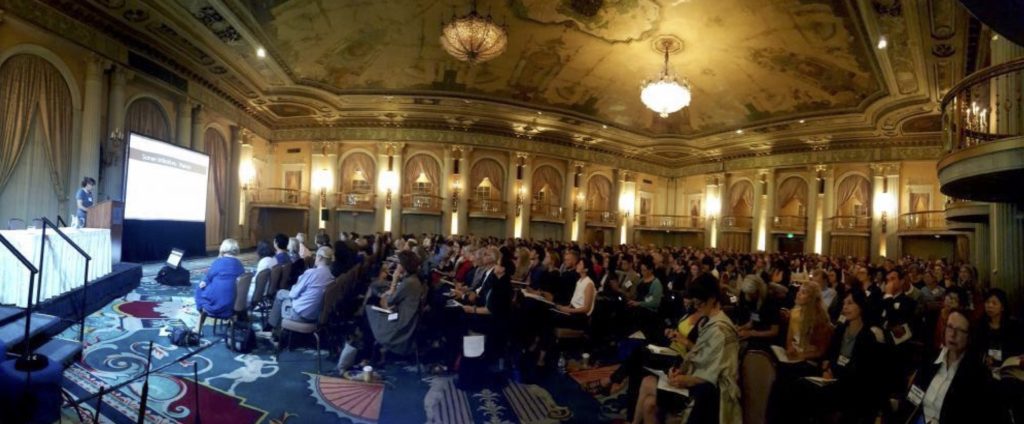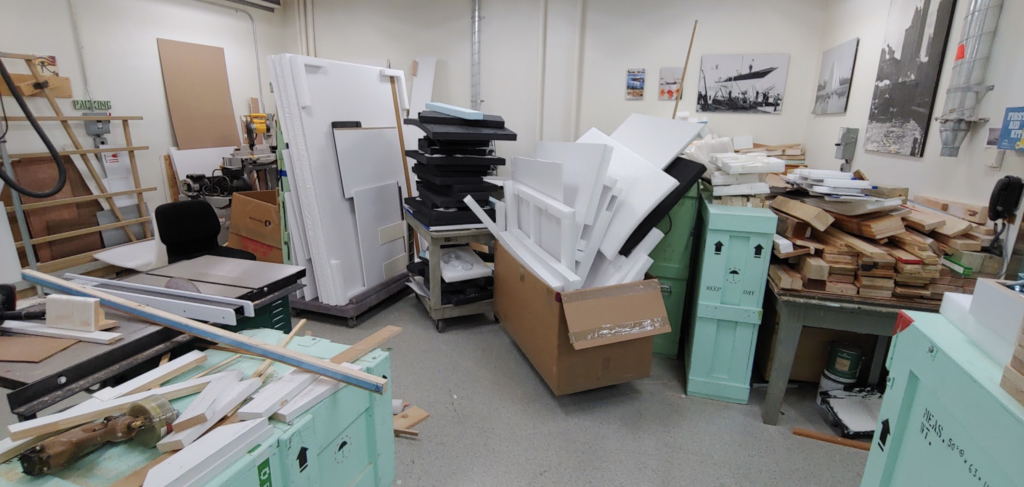
Introduction
The cultural heritage sector depends upon materials that deplete natural resources without considering at what cost? As we create and preserve cultural heritage, we simultaneously foster its demise by contributing to climate change, focusing on preserving the past with less concern for the future. We specify petroleum based, virgin, or highly-processed products in our treatments, exhibit designs, and packing materials, and set energy intensive parameters for storage, exhibition, and travel. STiCH is a powerful tool to help simultaneously optimize collection care and environmental longevity.
Many custodians of cultural heritage are interested in preserving objects using materials and products that are not harmful to the environment or the practitioner, but question if their choices would have a valuable impact. Let’s examine the parts to this equation: the number of us and, in the next section, how much we care for and how much we use doing it.
First, consider the thousands of professionals doing this work,
• AIC membership rolls have approximately 3,200 conservators. They are conservators in private practice, and institutional members; each institutional member represents an additional ten to hundreds of conservators.
• The Professional, Art handling, Collections Care Information Network PACCIN has nearly 2,000 likes from art handlers, exhibit designers, registrars and others who may physically handle art.
• The IMLS Heritage Health Index of 20051, updated in 20192 indicates that at least 74% of responding institutions had one staff member/consultant or more responsible for collections, leading to estimates of 4,000 people responsible for caring for collection.
• And then there are all the artists who use materials to make art, and exhibit designers who use materials to display art.
With omissions and overlaps we can assume there are ten thousand professionals who regularly consume materials while making, caring for and displaying art. The resulting potential impact significantly affects not only our health and the health of the planet, but also as a market force to drive shifts in available goods.
Unfortunately, the sector does not yet have an understanding of its full environmental and climate impacts, but we have pockets of information that are strong indicators of what we will discover. STiCH will help us identify the most common materials questioned, based on frequency of searches. From this information we can begin to influence manufacturers to come up with more sustainable alternatives. STiCH can also help us monitor if materials queries change over time- if professionals begin to search primarily on items with less CO2eq based on the tool calculations.
1 https://www.imls.gov/publications/heritage-health-index-full-report
2 https://www.imls.gov/sites/default/files/publications/documents/imls-hhis-report.pdf
Relevance to Cultural Heritage Preservation
Now let’s consider the quantities of cultural heritage we care for. The 2005 IMLS Heritage Index reported that there are 4.7M works of art in collections, 1.35M historic objects, 153M photographs, 189M natural science mechanisms, and 270M rare books, periodicals, and scrapbooks in museums.3 We can assume that number has not shrunk. With this volume of materials, even caring for a portion of it has a volume of impacts through the chemicals, materials and energy used in the process.
Considering the number of conservators and art packers we have noted, we can confidently assume there are aggregate impacts based on volume. If you select a variety of materials – for example liters of solvent, square feet of backing board, and number of institutions- and if each conservator uses 1-5 liters of solvents then by this rough calculation 6,000-35,000 liters are being used yearly.
Packing and shipping have an outsized impact. To develop an estimate, if we choose just 10% of the United States’ 35,000 museums, and if we estimated 30 crates for an exhibition in a major art museum and if each only had one exhibit, that is 105,00 crates and packing material annually. Even allowing for duplication and quiet years, if all cultural heritage institutions and professionals were estimated, those materials alone amount to an insupportable cost to institutions and the planet.
Currently, we can only guess at these numbers. We have no way to calculate the true amount of materials used by the cultural heritage profession or the cumulative carbon footprint. Once STiCH becomes a common tool for professionals, it can provide us with much more of this information. Analysis of the regular searches will provide numbers of materials in volume used by our profession and will help us to understand, in current numbers, at what cost professionals using STiCH are creating and preserving cultural heritage.
The volume of effort, and the influence of each worker are important to include when considering impact and therefore various costs.
• STiCH empowers us to make educated choices by providing scientific data as a basis for decision making. With this tool we can weigh at what cost to the environment we carry out our work creating and preserving cultural materials.
• The data STiCH provides helps us determine the cost of treating each object to the fullest extent possible or reconsidering treatments, storage methods, exhibition and loan practices to reduce the carbon footprint of our work.
• Knowing the true impact of a material allows us to decide if we should continue to treat each object with the idea that there are unlimited supplies and resources.
These and other questions regarding how much museums collect, and the level of care for items, are difficult to balance. Using STiCH we can look at the environmental impact and reconsider our actions. A tier-level decision-making approach that incorporates STiCH results can be useful for determining how and when to allocate all resources to collections management, care, storage and display, including staff time, energy use, materials and funds.4
3 http://www.activecollections.org/thought-pieces/2015/10/23/active-collections-rethinking-the-role-of-collections-in-your-museum
4 http://www.activecollections.org/manifesto

Photo courtesy: Paul Speh, chief packer, The Brooklyn Museum
Takeaways/Conclusion
The tool gives you a path for making educated choices for materials concerning their environmental impact.
With scientific data users can influence production choices made by manufacturers- opting to buy materials that result in lower GHG emissions.
Reference Case Studies in STiCH to learn more.
Resources/References/Links/ Where to go for more Information
Active Collections: http://www.activecollections.org/thought-pieces/2015/7/29/go-ahead-and-tier-your-collections

2 replies on “At What Cost? It all adds up.”
Hi! excellent article! but… how can I use STiCH? is already available?
Thanks!
Hi sorry for the delayed response. Please visit our site at stich.culturalheritage.org. It should be self explanatory.
Best, Sarah